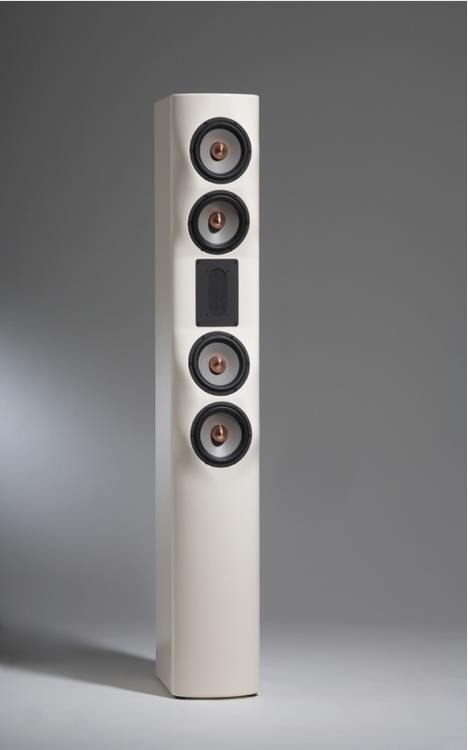The Nature Of Sounds
|
In principle, natural sound events are based on excitation and decay. The process can be well described using the example of a guitar string. The string is excited by the kinetic energy of a finger or a plectrum. The resulting initial vibration of the string is a sound that is essentially determined by the characteristics of the attack (speed, intensity, location); the process starts with the transient of the transient. This is the first half-wave, which is not a pure sine half-wave but a frequency mixture with many very fast (high-frequency) sound components. However, this looks confusingly similar to a sine half-wave. It is the fast rising edge generated by the guitarist's finger strumming. When a string is plucked or a percussion instrument is struck, the first pressure wave can be both a vacuum and an overpressure wave. This can be seen very well in musical productions. Immediately after excitation, the spring-mass system of the string forces the vibration frequency toward the resonant frequency of the string. Only after two or three transient impulses does the guitar side vibrate out in the direction of the resonance of the side until the note has faded away or the side is plucked again. The vibrational energy is also transmitted to the guitar body, where it excites further resonances. The first sound waves of the process reach its maximum volume, whereas the subsequent vibrations in the direction of the resonance of the side contain significantly smaller amplitudes (a lower volume).
Both graphs show clear amplitude (volume) differences between the initial sounds (transients) and the decay (transient resonance). The transients are often louder than the decay. They contain the highest peak amplitudes (sound level maxima) within the music. The transients are of outstanding importance for auditory perception. They are decisive for the recognition and localization of sound events. A continuous tone can practically not be localized. Only when transients are added to a continuous tone, even of very low intensity (as in the case of distortion, for example), is localization possible. We locate sound events by their transients. It is therefore understandable that in loudspeaker reproduction the correct conversion of the transients has such a strong effect on the spatial imaging. |
|
The following quote is taken from the book "Hifi hören", Vogel Verlag, 1979, by Heinz Josef Nisius: "Measuring and listening comparisons show that the impulse behaviour of loudspeakers is, if necessary, more important than an amplitude frequency response linearised to ± 2 dB with regard to the highest possible sound quality, although this is not unimportant and is also a prerequisite for good impulse behaviour. Exaggeratedly formulated one can say that impulse fidelity is one of the most important, at least the most difficult to fulfil quality criterion of a loudspeaker. The same applies to pickups and amplifiers; it is generally accepted for amplifiers, but not for loudspeakers. That the impulse behaviour, i.e. the swing-in and swing-out behaviour of loudspeakers, is of decisive importance for its sound quality becomes apparent if one plays a monaural piano tape recording "the wrong way round", from back to front. Even long sustained chords are then no longer identifiable as piano sounds, although, seen as a whole, frequency amplitude statistically "everything is right". However, the temporal relationships between frequency and amplitude are confused. And that distorts the sound."' |
|
Graphic 1 The signal in the picture on the left shows the waveform, the sequence of oscillations of a real musical event in a very simple and therefore still relatively complex, realistic representation, in the form of an oscilloscope display. We see the pressure fluctuations in their temporal sequence, i.e. exactly the event that is the basis for hearing. This is how our hearing is stimulated. It is precisely these pressure fluctuations in their temporal sequence that allow us to distinguish this event from the next one... |
|
Graphic 2 It is the sound of a struck percussion instrument. The sound event begins with a few vibrations of very high amplitude (volume) and decays with low amplitude. The sequence of the vibrations and their amplitude form the basis for the "understanding" of the sound event. Only when the oscillations excite our eardrum in this form do we recognize this event in its original form. Only in this way can we recognize and understand speech, for example. The illustration of a natural sound structure also clearly shows the enormous difference in volume between the transients and the subsequent oscillations. The transients are many times louder. |
|
Graphic 3 Mathematical Analyses |
Let us now imagine that speaker model 1 delivers the signal sequence of graph 1 and speaker model 2 delivers the signal sequence of graph 2. Both speaker models would have exactly the same frequency response.
- Loudspeaker 1 can easily reproduce sound events in their original form.
- Loudspeaker 2 reproduces sound events virtually unintelligibly.
The difference in the vibration sequences of graphs 1 and 2 is small in relation to the differences that loudspeaker models reveal in comparison. Nevertheless, it is this small difference that is sufficient for us to hear two distinctly different sound events.
<zurück: Myroklopädie>
<zurück: Myro>
